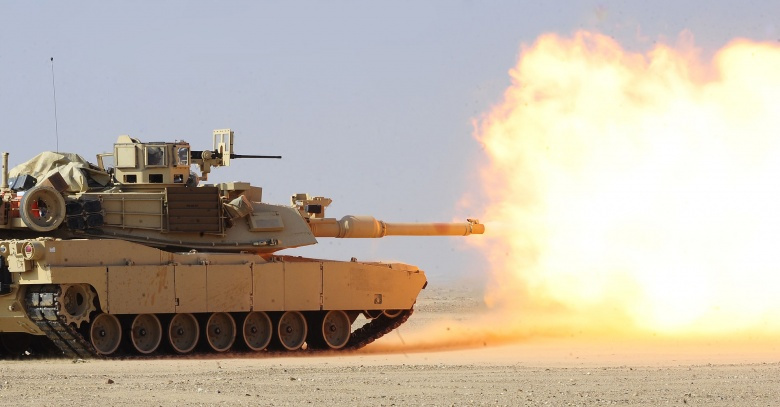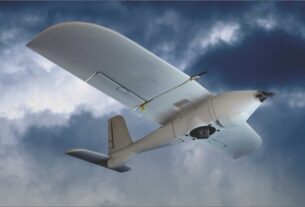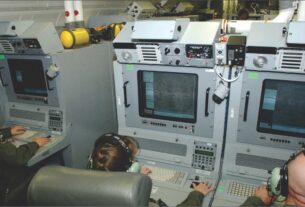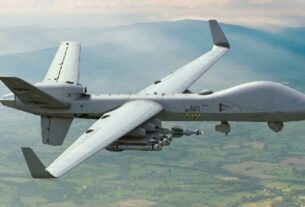Battlefield artillery systems may see more changes
The use of artillery in modern warfare has passed through lot of changes since World War II but the adaptability to the new requirements of the conflicts now requires advent of technology and effective strategy for maximizing the gains.
It is obvious that the artillery history is interesting, but nowadays two aspects are important and those are the current technological level of the artillery and their perspectives in terms of evolution.
In order to achieve the assigned tactical missions, the field artillery and rockets execute the specific support tasks according to the operation scenario, adopting a dynamic organization, equipment, tactics, techniques and procedures/TTPs.
Thus the artillery executes 6 basic activities such as artillery command and control, multiple data and information acquisition, combat deployment, fire support execution, timely execution of fire maneuver and means, ensuring the service support for the artillery.
One can undertake a comparative study of the three current methods of equipping the artillery with fire assets, meaning the tube artillery, smooth bore barrel (the mortars) and the multiple launch rocket systems, from the point of view of the expeditionary forces in the joint operations.
First of all, the Western military experts analyzed the integration of the tube artillery on armored chassis in the expeditionary groups. They reached the conclusion that the general tube artillery and especially its selfpropelled variant, lost terrain before the mortars and MLRS.
Their arguments refer to the fact that the bomb launcher is more efficient due to its organic integration to the smallest tactical levels (battalion and company).
It has a short time of reaction, a high rate of fires, and the reduced weight allows to be easily transported on great distances (strategic mobility) in the area hard to enter.
They are also considered to be heavy to deal with the current scenarios where an operational speed and increasing mobility, reduced resource consumption are needed.
On the other hand, the mortars are lighter artillery systems than the selfpropelled artillery; they weight only few hundreds of kilos and can be successfully used within the urban areas, mountains, and cross road, as support for the infantry, rangers, Special Forces, airborne, or aircrafts.
It is also suggested the fact that in the scenarios supposing counter battery fires, the mortars are mounted on combat cars or armored amphibious transporters in order to ensure a high ballistic protection.
Secondly, some experts consider that a flexible combination of the fire support of different armed forces, like the naval artillery, field artillery or combat helicopters, UAVs equipped with rockets, ballistic missiles and artillery assets shall make the tube artillery unavailable.
Thus, the mortars present plenty disadvantages. With a caliber that does not exceed 122 mm and a limited range (between 5-13 km), the mortar can cover only a limited area, a close zone, cannot act over armored cars, munitions with submunitions cannot be used, the target effect is reduced due to the projectile caliber, most of them do not have a centralized fire center and are used only for a limited range of targets.
Comparing to the smooth bore barrels, the tube artillery has a large caliber and fires the different range of munitions that meet the requirements to achieve the effect on targets, thus producing great advantages for the tube artillery before the mortars.
More than that, the howitzers have a great range (42 km with base-bleed projectiles), meaning fire covering for a surface 16th times greater than mortars can cover. It worth mentioned that most of the mortars do not have the precision nor the capability of the tube artillery to execute, in any conditions direct fires, a very important role in executing the close security and defense of the battlefield of the artillery and to ensure force protection.
In exchange, the integration of mortars to the infantry battalion or company level or similar, is an advantage from the tactical point of view. The employment of the tube artillery units can be benefic for the assured fire support and for the information delivered through its STA systems.
This is a traditional advantage of the tube artillery against the mortars. The modern management systems of the artillery also integrate and process the data from a large spectrum of sources: acoustic sensors, observation radars, surveillance, counter-battery, photometric images, or UAV images, aerial and satellite images.
Together with the operational orders, messages, data and images delivered, all this information creates in real time the data base of the command and control systems of the modern artillery.
On the other hand, there are contestations that suggest the fact that the artillery should lose the privilege to access everything that means intelligence within the battlespace and not to be able to coordinate all the lethal and non/lethal assets of the joint forces, in order to achieve the effects on the battlefield.
Of course, the usual increase in the range of the projectile does not entail any useful effect. When flying long distances unguided munitions are very deviate from the calculated line of traffic and hit a target for a reliable comparable small size will be very large expenditure of ammunition.
In addition to economic inefficiency similar approach may not be appropriate because of the likely consequences in the form of destruction or allied civilian objects. Ensuring economic and combat effectiveness of shelling, even more so in complex criteria, can only be corrected with the help of ammunition.
The first guided artillery shell, which has come down to production and practical implementation, was a South American M712 Copperhead. This 155-mm ammunition has range of up to 16 km, and in the final section of the line movement suggests the target with a semi-active laser homing.
Weighing about 62 pounds, “Copperhead” was carrying least 7 kg of explosive, but with the guidance system compensated for this defect.
In the 80 years of the M712 projectile has been upgraded, then got the opportunity to be induced not only by the reflected light of the laser, and the infrared emission targets.
According to various sources, the effectiveness of guided missile Copperhead compared with unmanaged ammunition over several 10-s time.
On the emergence of adjustable M712 shells Russian Alliance said the development of the complex 2K24 “Centimeter”, created for use with 152-mm artillery systems.
The principle of guided missiles of this complex is similar to the South American “Copperhead”: Spotter illuminates the target with a laser and the shell is induced by light reflected from the target. Most firing range missiles “Centimeter” was 18 kilometers.
The forthcoming development of the ideology of the complex steel shells “Krasnopol” and “Kitolov.” They just use semi-active laser guidance, but differ in their features.
Thus, the 45-pound “Krasnopol” 152 mm caliber can fly at a distance of 25 km. Argued that the use of guided missiles of this type for the destruction of a particular purpose may be to achieve a saving of ammunition in 95-98% compared with the rate of uncontrolled “blanks”.
The projectile “Kitolov” has the smallest size (122 mm or 120 mm in the export version) and, as a consequence, the lowest range accuracy at 12 km. On the basis of “whalers” was created corrected ammunition for 120 mm mortars.
Corresponding feature of all outlined above guided missiles is to impose on the reflected laser light. Because of this, in addition to a successful attack requires a few people who will highlight the target with a laser.
Thus, in contrast to the self-propelled gun or artillery systems, they will be small compared to the distance from the goal itself the maximum in five to seven kilometers.
This fact increases the risk of loss of personnel and because in Western countries a similar concept of a guided projectile was found to be ineffective and futile.
As a method of solving the existing problems in the United States was developed projectile M982 Excalibur. This shell no need for backlighting purposes, as it has a combined satellite and inertial guidance system.
Before firing artillery crew receives intelligence from the target coordinates and enters them into electricity “stuffing” of the projectile. Next 155-mm projectile is fired, and adjusting its line of motion in accordance with the data of the inertial navigation system and satellite GPS, hit the target, or falls in the vicinity. The stated range of up to 60 km provided by the use of additional solid-fuel motor.
In addition, the highest range is provided with a folding wing, which is planning to shell out top of the line of traffic.
Claimed possible radial deviation (CWE) M982 projectile does not exceed 10-12 meters. M982 projectile can not put at grave risk of scouts and spotters, as the target coordinates can be obtained even what available means, including using unmanned vehicles.
With all of this Excalibur has been criticized because the guidance does not provide the coordinates of the guaranteed settlement moves the goal. While the data on the target coordinates reach the gunners and as long as they produce a training projectile and shot technique opponent can manage to get away from the area.
According to the estimates of U.S. economists, even in mass production projectile “Excalibur” can not cost less than 50-55 thousand dollars. It is possible to recognize the applicable price in comparison with the huge flow of unmanaged ammunition, but the price for himself on the projectile M982 looks pretty big.
As candidates expensive correctable projectiles like “Copperhead”, “Krasnopol” or “Excalibur” is offered a special module for ordinary unguided missiles.
In 2010, the Israeli company IAI unveiled module TopGun, representing a unit fitted to the place of regular fuse. A module for 155-mm shells provides guidance on the signals of the munition satellite navigation system and is claimed to give CWE less than 20 meters at a distance of about 40 km. Since the system TopGun is an additional module, it can even be installed on any standard NATO projectile, regardless of the type having a gas generator or as an additional motor.
Virtually all measures to increase the effective range and accuracy of the method are guided projectile delivery to the target of the explosive charge. Over the last species are popular in the last decades are trinitrotoluene, “composition B and other widely known substances and consistency.
Soon there were proposals to reduce the explosive charge to perform special tasks. Under special puzzles in this context refers to the defeat of small targets surrounded by other objects that can not be destroyed.
In such a case, it may be only the introduction of low-power explosives or general unfilled munitions. Go with this last development of new explosives, holding more than the highest explosive and blasting action. But their general introduction not yet practicable because of the highest prices.
As for the rest of the shells purpose, it is currently working on the last ammunition smoke, aerosols, which shield the infrared and laser radiation, etc. Also, in recent years it has been created a few rounds while lighting the pilot performing illumination in the infrared spectrum.
Such ammunition can contribute to the criteria in the night units, thermal imaging equipment and kitted out with all this, not to help the enemy that does not have such equipment. Finally, it should be noted developments in DIME-shells.
These promising ammunition based on the technology of DIME (Dense Inert Metal Explosive -Dense inert iron explosive”), implying a filling of a special alloy shell nanoparticles.
During the detonation of such a shell scatters around a huge number of small “grains” refractory metal that act like shards. With all this damage radius these “fragments” of the equivalent of a few meters, then they lose all their energy or burned. DIME-shells in the future may make konkurentnst ammunition classical assembly, but with a small explosive charge.
The expeditionary forces must have the capacity to rapidly deploy in the theater of operations, because otherwise the strategic mobility is impossible. Because the mobility is so important, the multinational forces equipped with light armored technique have become the main assets for a rapid reaction in crisis and conflict situations.
Thus, in the current scenarios, the combatant forces have permanently benefited from a close support and the armored forces or the artillery has a privileged role.
As for the particular features of the armored forces, the tanks can be transported on platforms in order to provide the immediate support. Nevertheless, the armored forces must to be employed in a manner that allows them to fully exploit their capabilities especially the combined action with the other forces assigned to the operation.
Thus they should be used for deep operations, marching offensive, in order to execute the counterattacks, aircraft or airborne destruction, own flanks defense or in other situations that could change the course of military actions.
Nevertheless, their late intervention leads to the increase of violence, lost of the tempo, and the appearance of great difficulties in controlling the battlespace. As for the artillery, it still remains a branch capable to support efficiently the dynamic operations of the armored forces.
It has a determining role in achieving the effects in the enemy disposition and can execute barrage fire to protect their flanks, the gaps or to block, neutralize the airborne or to interdict the movements.
Thus, the artillery can cover with fire large surfaces without using the special transport platforms or other elements of service support. It disposes of reduced resources consumption and an easy maintenance.
The artillery munitions also became highly accurate (employment of intelligent ammo), the fire concentration is flexible, and the possibility to assess and measure the effects on targets is increased.
Even if the targets are not stationary anymore, the artillery has the means to identify, select and precisely strike even the moving targets. Plus, the artillery actions to accomplish the missions can be seen less challenging than using the armored forces, especially for the stability missions.
The psychological effects among the civilians or the enemy are easier to be obtained by the artillery through precise strikes, from great distance reducing the damages and the casualties comparatively when using the armored forces.
The artillery capability to act as a member of the combined tactical groups, it gives a plus of utility at a tactical level. Usually, the stability and peacekeeping/ peace enforcement operations tend to become more complex and the artillery actions are omnipresent even close to the alignment.
The self-propelled systems deploy more rapidly than the armored forces, they can react to a larger spectrum of scenarios of the insurgents and can be kept in the close areas and engaged for a rapid reaction and for great range.




